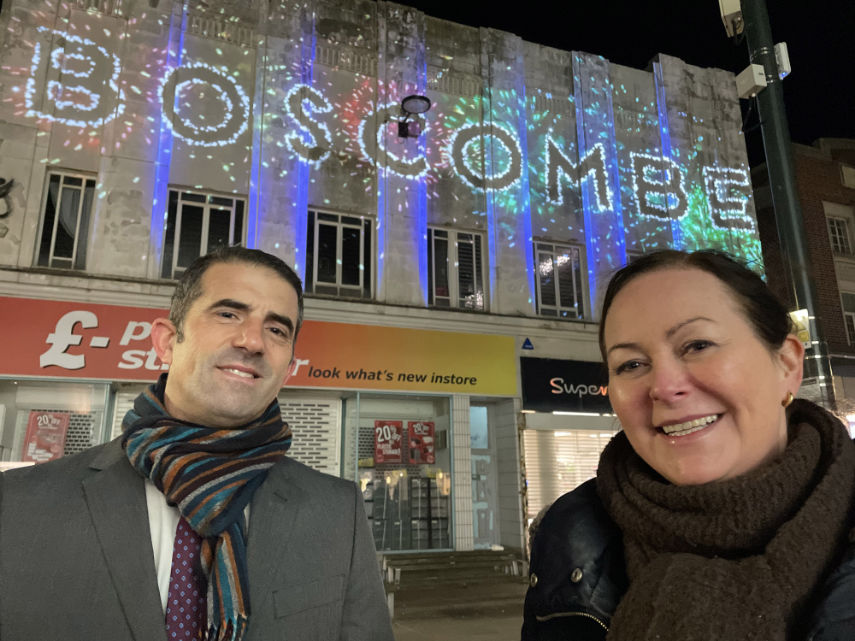During San Diego’s booming days of the 1880s, many people came to our beautiful city. The unbeatable weather and unlimited tourism have provided plenty of opportunities for enterprising businessmen to pursue their fortunes. Therefore, the influx of entrepreneurs has put a premium on real estate. Places were needed to house all the new business lawsuits brought forward. As a result, many modern style commercial structures were built. Since the main purpose of such a facility was to display wares or advertise services, most structures were relatively simple by Victorian standards, with large display windows and fairly spacious interiors. However, some were designed to provide not only utilitarian purposes, but also to reflect the elegance of the time and the owner.
One of these buildings was the Fritz. The owner of the structure was Louis Fritz, a German immigrant who was, moreover, one of the founders of the Golden Lion Cafe, a very popular restaurant and lounge on 4th Avenue. The new building, which cost $ 30,000, was to be used as a store and offices. Fritz chose Edmond Blachman as his architect, who designed the structure with architectural lines to coincide with the building to the north, the Loring and Company building. This provided an imposing facade of fifty continuous feet, which greatly improved the appearance on the street.
The building was a three-story structure plus a basement, brick, and steel structure, making it slightly taller than most of the surrounding buildings. The floors were supported by steel beams and columns which, if visible, were embedded in concrete. This not only provided durability and strength, but was also more economical than brick. Concrete steps, with a pretty brass handrail, lead from the sidewalk to the basement entrance. The building had a flat roof with a parapet and decorative serrated moldings running the length of the structure. There was also a decorative finial detail on the raised points of the parapet. An additional touch of elegance was the medallion adorned with the monogram “LF” in the center which adorned the second level to the left of the street entrance. The “LF” of course refers to the original owner, Mr. Fritz.
Four double-hung hung windows have been placed evenly across the fronts of the upper floors. Transoms were also placed above each of the windows on the second floor. Narrow decorative bands of painted moldings add interest to the structure’s simple architectural lines.
The facade of the building had a recessed entrance flanked by large bay windows, which opened into a spacious vestibule. Although the exterior of the building is relatively simple, Italian neo-renaissance elements are clearly visible inside the structure. The ground floor, designed to be a restaurant, featured an onyx-covered vestibule and a dark Tennessee marble base. The dining room, with its vaulted ceiling and toothed cornice, was supported by pilasters which formed panels decorated with hunting scenes. North of the main entrance was a beautiful staircase that led to the second and third floors.
Equally artistically designed, the upper floors featured Oregon pine doors, stairs, and window moldings. The 14 large apartments on these floors were equipped with wardrobes, sinks, bathrooms and linen closets. The toilets, the best on the market, are equipped with instantaneous heaters. The fittings and furnishings were stylish and comfortable. The building was both connected to gas and wired to electricity.
When the Fritz Building opened in 1909, one of the first tenants was the Denver Bachelor Apartments under the management of Mrs. Alice S. Poole. These new apartments deviated from the usual way of accommodating gentlemen. First, the rooms were only rented to gentlemen. Second, no woman or child was allowed under any circumstances. The rooms were declared to be spotlessly clean.
Poole was a reporter for the San Diego Bee in 1886 and wrote under the pseudonym Helen E. Middleton. She has reported on special reports and has also written a column on the company. Poole also built the first house in San Diego, at 1435 9th Street, which was fitted with modern plumbing! Still active, she swam San Diego Bay on the ferry crossing until the age of 60.
Poole remained in charge of Denver until 1915, when it became the Minneapolis Hotel and Restaurant. The restaurant, located on the first floor, was known to host sex workers from the Stingaree area. As these women were unwelcome above Market St. (then H St.), at meal times messenger boys could be seen on bicycles carrying platters of gourmet food to these ladies and their families. clients. When city officials shut down the “red light districtâ€, the restaurant’s food delivery business suffered greatly! You could think of them as the original GrubHub. The restaurant and hotel continued into the 1930s. While a lot changes, a lot stays the same!
Over the years, the downstairs location has remained a series of restaurants. It has been extensively modified and currently houses the Myst Lounge, a bar, restaurant and hookah lounge. The second and third floors remain close to their original condition and are being converted to AirBnB.
– Sandee Wilhoit is Historian and Senior Tour Guide for the Gaslamp Quarter Historical Foundation. She can be contacted at [email protected].
The Fritz building
(1908)
756 – 760 Fifth Avenue
Architect – Edmond Blachman
Architectural Style – Modern Commercial / Elements of the Italian Renaissance
 Welcome To Poole
Welcome To Poole
_w=1200_h=630.png?v=20220321141806)


